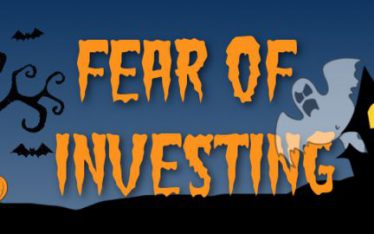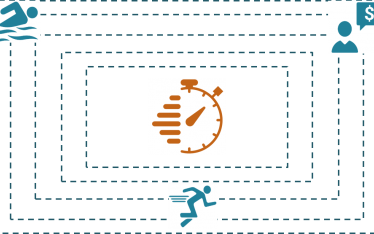These are challenging times for asset owners, particularly those with liabilities or obligations to fund with financial returns, such as pension funds, insurance plans, and endowments and foundations whose budget depends on the returns.
With punk earnings providing little in the way of fuel to power the stock market higher, and congenitally low interest rates globally hurting bond returns, financial markets structurally are not in a position to contribute much to the funding of asset owners’ fixed obligations. The capacity and cost to generate alpha is under more scrutiny than ever. The stress is working its way out in fund closures, fee compression, and industry consolidation. With beta severely limited, investors need to look beyond the markets and scour every nook and cranny to find alpha. Research suggests that the due diligence process can be a source of much-needed alpha.
Bunnyland
Eight years after the onset of the Great Financial Crisis, the S&P 500 has more than tripled from the trough at 683 in March 2009 to current record levels approaching 2,200. But the aging bull has grown weary. Factset data and estimates show earnings for the index basically flat at $117-$118 for the three calendar years 2014-2016. The estimates for 2017 predict a 13% increase in earnings to over $133 for 2017, based on expectations for strong profitability growth in the energy sector; however forward earnings are often optimistic and later revised downward.
The anemic earnings growth has been reflected in market performance. In 2015 the S&P was down 0.7% for the year, but with dividends eked out a 1.3% total return. For 2016 the index is up 5.2% YTD, and dividends add another 1.7% for a total return close to 6.9% just before the close of the third quarter. Wells Capital Management’s Chief Investment Strategist Jim Paulsen has dubbed this market a bunny. It hops about aimlessly, in contrast to the clear trends of the higher-charging bull or the downward-falling bear. But the bunny is not as harmless as it sounds when investors are depending on it for returns.
“Turning Japanese”
The bond market is not much more help for investors. Borrowers’ benign environment of low rates and quantitative easing has seen the 10-year Treasury mostly yielding 2% or less for the better part of three years now. Further, regulatory and structural changes in the market have resulted in reduced liquidity in the corporate bond market. The supply that remains is rich, with investment grade risk premia tightening about 50 bps over the past 18 months, further compressing yields as a function of liquidity conditions. Yes, the Fed has commenced its tightening cycle, but prognosticators are cautioning that rates and yields will remain much lower for longer than in past cycles.
The globalization of low interest rates by the Fed and all the rest of the world’s central banks means it is unlikely for US investors that salvation in the form of higher yields will come from abroad. Some emerging markets have been a recent exception, but after several years in purgatory, the glory seems faint and potentially fleeting given the Fed’s nascent tightening cycle and the adverse impact it has had historically on emerging markets. The fact that the Fed is out ahead of the other major global central banks in its normalization campaign means that any foreign investment will be subjected to the headwinds of a strengthening US dollar, hurting returns, as the US moves forward in its cycle.
Many allocators are banking on alternatives to provide a solution in the form of alpha. But the potential added return from hedge funds and private equity comes at the cost of higher risk, not to mention higher fees, which cut into the returns. Private markets in particular have grown tremendously in size and sophistication, and they provide opportunity for increasing numbers of institutions to augment returns. Illiquidity is a hallmark of the segment, however, and a feature that excludes private investments from many portfolios. Moreover, private investments eventually need an exit, and for that they are dependent on the pricing that prevails in the public markets. This means that there may be a higher correlation than expected with returns in the publicly traded markets.
As monetary policy, regulation and market developments have conspired to wring much of the juice out of beta, innovation and automation in the industry continue apace, raising questions about performance and fees. With the dearth of opportunity in the markets and the pressure to trim spending, what’s a poor investor to do? Where to find alpha when the markets are so stinting with beta?
Diligence as a Source of Alpha
Research by Brown, Fraser and Liang (2008) found that operational due diligence is an important source of alpha in hedge fund investment. Brown et al found that the largest funds of funds outperformed the smallest by 269 bps on an annualized basis, which they determine to be “a statistically and economically significant amount.” While this adds to performance, it is not free. The expense of due diligence may be a key reason underlying the consolidation in the industry as the largest players become even larger, since building and maintaining a due diligence apparatus requires scale. The conclusion of Brown et al: “due diligence can be a profit center. Alpha is very difficult to generate. This research demonstrates a way to generate alpha that is non-obvious, novel and currently relatively under-pursued.” Further research by the group also found the converse: “that operational risk associated with conflicts of interest both within the fund and external to the fund can lead to a reduction in return of on average of 1.68 per cent on an annualized basis.” The research firmly establishes due diligence as a contributor toward alpha that can be both positive and negative.
So it seems that beyond the asset allocation decision, the next most important process of portfolio investing is manager due diligence. According to Mark Anson in his 2006 classic Handbook of Alternative Assets, the amount of time required to diligence a fund generally ranges from 75 to 100 hours. The fees charged by funds of funds can be justified in part by the expense of this critical process. The need for due diligence also explains some of the growth in investment consultancies and OCIOs, since diligence must be outsourced by organizations that lack the scale to do it themselves. Leading consultants are focused on commercializing due diligence, and consultant databases have become well known within the industry. But consultants and OCIOs also need to ensure a quality result. This raises an important question: how can scale be exploited for due diligence in a rigorous, systematic way to ensure a quality result?
As in any industry when competitive pressures mount, investors / asset owners must do all they can to gain operating efficiencies. The pressures from both sides, markets and investors, demand that fund managers and asset allocators relentlessly pursue efficiency gains and wring every nickel of cost out of their operations. It therefore makes sense to have a technology-enabled solution to control cost and ensure rigor in the process. How is this possible when much of the information gleaned is qualitative in nature? With a combination of automation, machine intelligence, and design thinking, such non-structured data can be structured as DiligenceVault has done, enabling leveraging of the data and analytics.
Those engaged in diligence experience the benign inanity of another kind of Bunnyland, in which they repeatedly copy and paste redundant information that disappears down email chains or into long documents like so many bunny holes. Structuring data and eliminating redundancies can allow your team to leverage the power of data for real quantitative analysis – and help your returns to multiply like rabbits!



